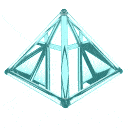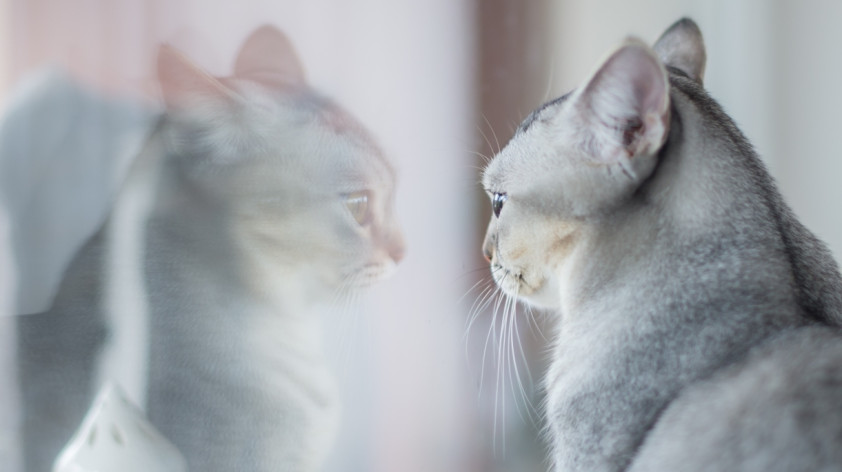What do you get if you cross a kangaroo with an elephant?
You’ll have to wait for the punchline, but you should already have shards of meaning tumbling about your mind. Now, jokes don’t have to be all that funny, of course, but if they are to work at all then they must construct something beyond the simple words deployed.
Language is the tissue that connects us in our daily social lives. We use it to gossip, to get a job, and give someone the sack. We use it to seduce, quarrel, propose marriage, get divorced and yes, tell the odd gag. In the absence of telepathy, it lets us interact with our nearest and dearest, and in our virtual web of digital communication, with hundreds of people we may never have met.
But while we now know an awful lot about the detail of the grammatical systems of the world’s 7,000 or so languages, scientific progress on the mysterious elixir of communication – meaning – has been a much tougher nut to crack.
Conceptual healing
How do people produce the everyday meanings that get stuff done, move us to tears, bore us to death, or make us dizzy with delight? Understanding the nature of “how we mean” is the Holy Grail of many disciplines in the behavioural, cognitive and social sciences. Moreover, it represents, for those of us working towards an answer, one of the last great frontiers in mapping the human mind.
Crucible of Language
Everyone agrees that meaning arises from a confluence of language, and the thoughts we carry around with us in our heads. But how, exactly? One early view on meaning-making suggested that we are born with an innate set of concepts; when we acquire our mother tongue, words are merely labels for these.
But we now know thanks to research by developmental psychologist Jean Mandler, among others, that concepts are acquired through experience, beginning very early in life, using similar sorts of learning mechanisms to those that are responsible for language. For pre-linguistic infants, it is fundamental stuff like distinguishing between animate and inanimate objects. These concepts are precursors to the more complex and abstract ideas that emerge later in our lives.

Mum? Is that you?
Construction project
Another challenge has been to figure out the relative contribution of concepts and language in terms of producing meaning. For example, consider the word ‘red’, in the following sentences:
Beauty, to me, is about being comfortable in your own skin. That, or a kick-ass red lipstick. (Gwyneth Paltrow).
The red fox… is the largest of the true foxes and the most abundant wild member of the Carnivora. (Wikipedia entry).
The word red in each sentence means different things: for most people, a truly vivid red in the Paltrow quote, and a dun or browny red in the second. And this is because the meaning doesn’t reside in the word itself. Language gives us instructions to activate different parts of conceptual knowledge in our minds and we then pluck the correct shade of red from the colour spectrum.

Mouthing off
Orchestral manoeuvres
For humans, concepts are necessary for learning, categorisation and advanced planning for survival. Their primary purpose is not for communication. Unlike other species, the evolutionary development of language gives us a system that interacts with our body of concepts to repurpose them for communicating with others in our daily lives.
It is like a symphony produced by an orchestra. The orchestra contributes the “what”, the conductor provides the “how” that enables the music to come into being, and move us with its sonorous splendour. Concepts, built through interacting in the world of daily experience, provide the content of meaning-making. But language provides the know-how, enabling us to package thoughts for communication.

A conceptual kangaroo, yesterday
This brings us back to the crucial question posed at the beginning, and sheds light on arguably the thorniest issue of human meaning-making: the nature of imagination and linguistic creativity. So, what do you get if you cross a kangaroo with an elephant? Answer: Holes all over Australia. When you’ve stopped laughing, consider what this reveals about the relative contributions of language and concepts in this most mundane act of human creativity.
The punchline provides the cue for us to selectively combine our concepts for kangaroos and elephants. An elephant is enormous, while a kangaroo gets about by hopping, and lives in Australia. Bundling just those signalled aspects of the creatures, we create a phantasm; an organism the size of an elephant, that hops about and lives in Australia. It is then inevitable that such a creature would leave craters in its wake.
Whether or not the joke is funny, to understand it we must deploy language as a prompt to activate just the relevant bits of our knowledge. Language guides the meaning-construction process, by providing instructions on how concepts should be combined. This insight is one of the most exciting and revolutionary in 21st-century cognitive science. Moreover, for arguably the first time, it offers a tantalising view of how human imagination works and how language combines with concepts to produce the extraordinarily complex feats of meaning in our mundane acts of everyday creativity.
Author of this article, published on 15 December 2015, is Vyvyan Evans,
Professor of Linguistics, Bangor University, UK





